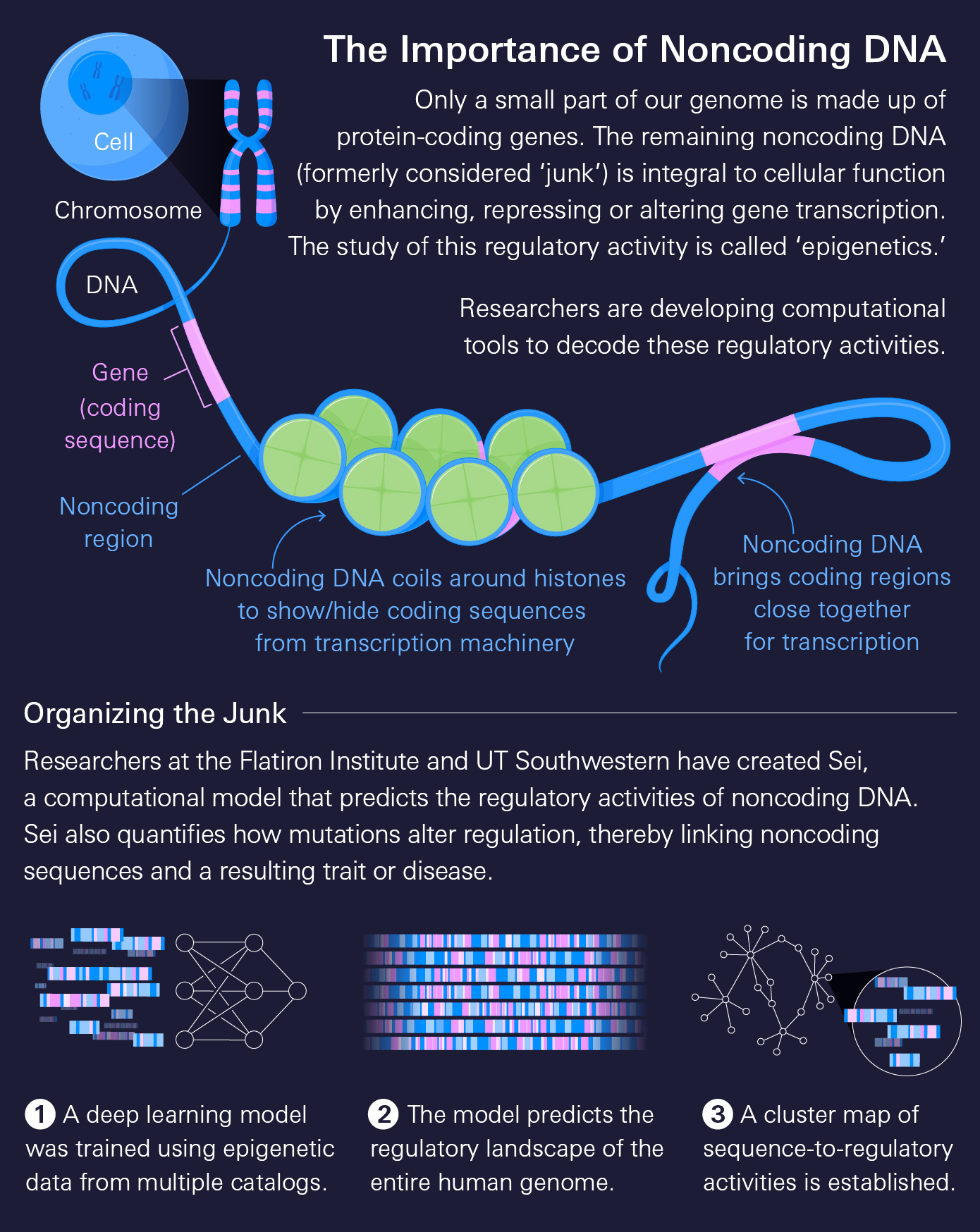Decoding Junk DNA
 In recent years, epigenetics — the term for the regulatory mechanism that alters a chromosome without changing its underlying DNA sequence — has emerged as a promising factor that could link DNA variation with function. Indeed, epigenetic mechanisms have been found to underlie an increasing number of health conditions, from cancer to the effects of aging to infertility.
In recent years, epigenetics — the term for the regulatory mechanism that alters a chromosome without changing its underlying DNA sequence — has emerged as a promising factor that could link DNA variation with function. Indeed, epigenetic mechanisms have been found to underlie an increasing number of health conditions, from cancer to the effects of aging to infertility.
By harnessing the breadth of epigenetic data now available to the scientific community, Olga Troyanskaya and her team have created a predictive computational model that might just bring forth that long-awaited Rosetta stone. Called Sei (pronounced ‘say’), after a species of baleen whales, the model is a major leap forward in breadth and accuracy compared to prior models based on predictive DNA sequences. It was reported by Troyanskaya and collaborators in Nature Genetics in July of 2022.
Project: Illustration of lede art to accompany article about the work (below); creation and illustration of graphic explainer (left.)
Client: Simons Foundation









